Author Lori L. Lake: Guns, Guns, Guns
Lori L. Lake is the author of Snow Moon Rising, a novel of survival set during World War II, which received a 2007 Golden Crown Literary Award as well as the 2007 Ann Bannon Popular Choice Award. She is the creator of the “Gun” series, which is a trilogy consisting of romance/police procedurals Gun Shy and Under The Gun and the adventure/thriller Have Gun We’ll Travel. Her first novel, Ricochet In Time, was about a hate crime. She has also written two books of short stories, a standalone romance, and edited two story anthologies. Lori teaches fiction writing courses at The Loft Literary Center, the largest independent writing community in the nation. She lives in Minnesota with her partner of 27 years and is currently at work on a mystery series and a How-To Book about the craft of writing. For more information, see her website at www.lorillake.com.
PART I
Modern hunting rifle with scope
I’ve always been interested in firearms, ever since I took a gun safety class at 14 so I could go out in the woods hunting with my uncles and cousin. I’ve studied firearms, read a couple dozen books about guns, and fired a number of weapons over the years. I wouldn’t consider myself an expert, but it’s been nice to become more knowledgeable about firearms because they’re an important topic for writing crime fiction.
Today I’ll talk about the kinds of guns professionals carry and the differences between types of firearms. Next week, in Part II, I’ll give you information about guns your sleuths might want to carry. The following week, in Part III, I’ll address the best guns for crooks and give further information about online places to research.
A Cornucopia of Guns!
I had the pleasure last month of shooting and examining a variety of firearms at the Oakdale Gun Club (www.oakdalegunclub.org) near the Twin Cities in Minnesota. The members who sponsored and taught this session brought over 100 different weapons for us to shoot. I fired pistols and rifles and revolvers and a 12-gauge shotgun. I even fired two AR-15s (which are similar to the M-16s the military issues). One of the AR-15s had a scope, and I hit the red bulls-eye at 50 yards – pretty good for an AR-15 neophyte.
.223 AR-15 without scope
The first, and perhaps most important, information I learned all boils down to:
Four Simple Rules
1. Treat every gun as if it were loaded (even if you think it’s not). Always assume a gun is loaded and dangerous.
2. Control the muzzle at all times. Loaded or unloaded, the gun’s muzzle must always be pointed in a safe direction.
3. Keep your finger off the trigger. Your index finger belongs along the side of the gun until you’ve sighted in on your target. Many guns have “hair-trigger” response, meaning that the slightest pressure will fire the weapon. Most “accidental” discharges happen because the gun handler had a finger on the trigger and flinched or squeezed without intending to.
4. Be sure of what you’re shooting at, and above all, be sure of what is beyond your target. It does no good to take down a criminal in a hail of bullets if the shots go through the wall, out a window, or down the street and kill innocent bystanders.
After the safety issues were covered, I got the chance to ask a lot of questions and came away with ideas and opinions to share.
Glock 17, 19, and 26 (from top to bottom)
Glocks, Glocks Everywhere
Lately I see that many mystery writers have their sleuths and detectives automatically default to carrying Glocks. Everywhere you go in crime fiction, they’re packing Glocks.
Glocks are common in the real world; approximately two-thirds of all law enforcement, including the FBI and the DEA, now use the Glock handgun. Glocks are light, versatile, affordable weapons that possess excellent stopping power and are chambered for 9 mm, .40- and .45-caliber ammunition. St Paul, New York, Charleston, Miami, Denver, and many, many more cop shops carry this weapon.
A fictional police detective can’t go wrong with a Glock, but make sure that if you use a real police department in your fiction, you have your cops carrying the weapon that department does actually use.
On-Duty Department-Issued Sidearms
There are differences across the nation’s police departments in what sidearms are assigned to staff, but most police departments of any size designate a standard department weapon, give an annual stipend (usually between $600-$900), and require officers to qualify at specific marksmanship levels. Because officers may end up using each other’s weapons in the line of fire, many departments have found that requiring everyone to carry the same weapon reduced shooting errors, and ensured that cops could quickly handle and reload each other’s guns. Of course, no single size fits all, so many officers don’t like to be told what gun to carry, but they have to follow department regulations.
9mm Beretta 92FS
Other than Glocks, police sidearms often include the .45-caliber Kimber 1911, .40-caliber Smith & Wesson, or the 9mm Beretta (which is what the military issues). The Los Angeles County Sheriff’s Department, the largest Sheriff department in the U.S. with more than 9,000 sworn deputies, has carried the Beretta 92FS since 1988. Last time I checked, Minneapolis allows its officers to use the Glock or the Beretta, and Saint Paul used the Glock.
I was surprised to find out that Glocks are not necessarily the first choice for off-duty officers, sportsmen/competitors, and those who carry for personal protection. Glocks may not be the first choice for criminals either (more on this topic in Part II and Part III).
Until the 1990s the vast majority of police departments issued revolvers as the primary service weapon. Colts and Smith & Wesson revolvers in .38, .357, and .45-caliber were typical. Most police departments in the U.S. have seen the advantages of the semi-automatic pistol over the revolver. Semi-automatics hold more ammo, are faster to reload, and can deliver more firepower. Very few police departments in the U.S. still issue revolvers.
.357 Magnum Colt Python
Some small-town departments may still be carrying revolvers, though. There are law enforcement officials who swear by the revolver because it’s a weapon that rarely misfires. Of course, a typical .38 or .45 generally only pack six rounds, and they’re slow to load (unlike a semi-automatic handgun which uses pre-loaded magazines).
You may find on-duty officers carrying an extra weapon, perhaps in an ankle holster. One of my friends likes the S&W .38 Model 649 because there’s no external hammer, which means it doesn’t catch on socks or pant legs. The 649 is easy to handle and easy to conceal.

.38 or .357 Smith & Wesson Model 649 (with no external hammer)
If you use a real-life police department in your crime fiction, in order to be accurate, you should check out what your police department’s gun requirements are before you send your book to press.
Pistols, Revolvers, Semi-Automatics, and Fully Automatic Weapons
A Pistol, by definition, is a firearm designed to be used one-handed. All matchlock, flintlock, and percussion handguns are classified as pistols. In 1835, Samuel Colt invented the “repeating” pistol – more accurately a “revolving” pistol – which eventually came to be called a revolver, and later semi-auto and automatic pistols were invented.
In the category of Pistols, there are four common subcategories:
- Single Shot Pistols
- Revolving Pistols (Revolvers)
- Semi-Automatic Pistols
- Fully Automatic Pistols (usually constructed from semi-automatic pistols)
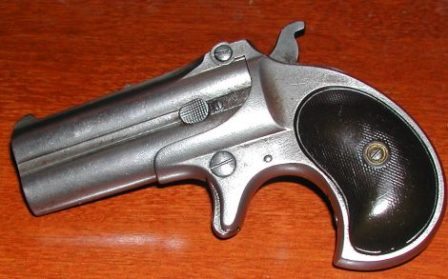
.41 RF Remington Derringer
Single Shot Pistols hold only one round of ammunition and must be reloaded and recocked after each shot. Nowadays common single shot pistols would include 1) the derringer or other type of tiny gun that’s easy to conceal, and 2) zip guns. The latter is an improvised handgun made from a piece of steel tubing that will hold one cartridge. (More on this in Part III about crooks’ weapons.)
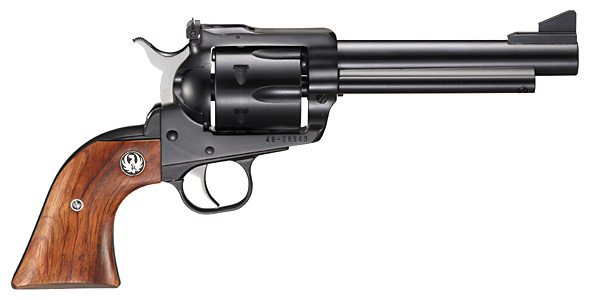
A Revolving Pistol or Revolver is a repeating, multi-shot firearm. The rounds are held in a revolving cylinder that rotates as you pull the trigger in order to fire through a single barrel. Typical revolver cylinders contain five or six shells.
.380 Walther PPK (with holster and an extra magazine with belt clip)
A Semi-Automatic Pistol has a single chamber and a single barrel and fires one cartridge with each pull of the trigger. Semi-autos automatically re-cock and reload the next round with each trigger pull. This gun has a magazine which is loaded with cartridges. The user manually cycles the first cartridge from the magazine into the chamber, and then the gun operates by using the energy from the recoil of each round of fired ammunition to eject the used cartridge from the pistol’s chamber and load a new round into the chamber for the next shot. (Also called an “automatic pistol,” “autopistol,” “self-loading pistol,” and “self-loader.”)
Machine-Pistol version of the CZ-75 Self-Loading Pistol (which can be emptied in one burst)
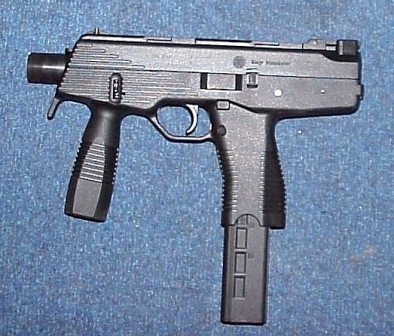
Steyr TMP (9mm x 19)
Fully Automatic Pistols are “rapid-fire” firearms that automatically re-cock, reload, and fire as long as the trigger is consistently depressed or until the ammunition runs out. Semi-automatic handguns can be modified to make them fully automatic. For instance, many Glocks can be converted to fire 33 bullets in about two seconds with one trigger pull. Though legal in most states, due to their lethality, fully automatic handguns have special state registratation requirements and multiple restrictions under federal law.
Part I Summary
I was surprised to find out that Glocks are not necessarily the first choice for off-duty officers, sportsmen/competitors, and those who carry for personal protection. Glocks may not be the first choice for criminals either (more on this topic in Part II and Part III).
After shooting nearly two dozen weapons at the gun club, I came to the conclusion that firearms are rather complicated with a lot to know about types, caliber, cartridge capacity, action, frame size/weight, amount of recoil, and safeties – not to mention how to load and clean them. You can bet that gun owners are complicated and unique individuals as well. A person’s choice of handgun can be as individual as their choice of vehicle or their style of clothing. If you give all your characters Glocks, gun enthusiasts will roll their eyes, so I would challenge you to consider other weapons before settling on any one firearm for each of your characters, even if the Glock is popular and widely used.
Next week we’ll talk about outfitting your sleuths with the perfect weapons. Until then, fire away with questions.




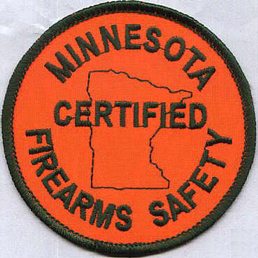
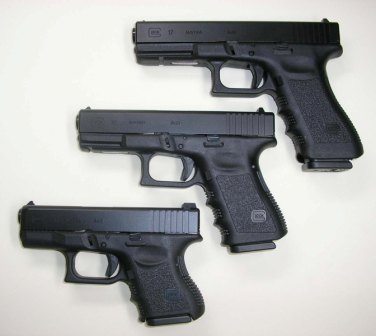

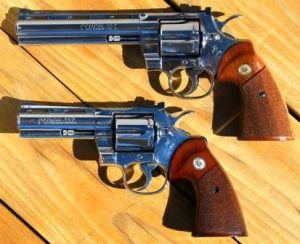
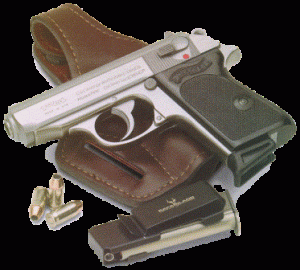
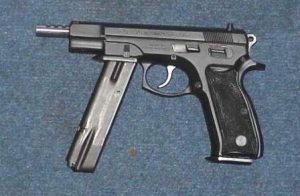




It can be hard to find all 3 of these articles. Here they are
https://leelofland.com/wordpress/?p=638
https://leelofland.com/wordpress/?p=734
https://leelofland.com/wordpress/?p=811
Wow ! I know I am late, just getting a chance to read all this. You are indeed a very interesting person Lori. Lee gets some great guests. I am looking forward to your next two parts.
I did find a shooting range in San Francisco recently, after getting interested in trying, however do not know anyone to go with. You can not attend a class with out a friend taking it with you or at least present.
Thank you again Lori !
Jut got back from a computerless trip and will have to play catch up. Fascinating article, and it just so happens that my husband took our daughter, who’s visiting from Northern Ireland, out to the gun range today for her first experience with firearms. Her husband’s in the British Army, and although she found the shooting experience to be something interesting, what she really wants to do is drive a tank. So far, the military spouse programs haven’t included that one.
Dave – The de-cocking lever is a really nice feature of the Sig.
Hey, if anyone’s interested, you can see the indoor range Dave’s talking about here:
https://leelofland.com/wordpress/?p=39
This range is designed and built by Mancom using money from a federal grant issued during the Clinton presidency. During his presidency, Clinton appropriated funds for law enforcement so we could purchase much needed equipment, and put more officers on the street. That funding disappeared when he left office.
However, similar funding now comes through Homeland Security. The difference in the two programs is that Clinton’s funds had to be spent on fighting drug crimes. The HS grant money must be utilized to fight terrorism.
Yes, that is where I fired.
I still like my Sig. The whole time I was firing, my thumb kept going up to flick the non-existent decock lever.
I MISS MY DECOCK LEVER!!
DAve – I’ve shot Glocks many times and I’ve really never had a problem with their accuracy (I’ve always scored in the high 90s). In fact, I found little difference between a Glock and a Smith and Wesson.
My problem with the Glock is they tend to jam and stovepipe rounds, and empty brass after firing 40, 50, or 60 successive rounds. It seems that when they get hot they begin to grow less dependable. Of course, if you only need two or three rounds to stop a threat, then they’re okay. But, wondering when that was going to happen would make me a little nervous. I’d rather have a sidearm that I could depend on each and every time I had to pull the trigger.
Hey, did you shoot the Glock at the indoor range in the sheriff’s office in Springfield?
Glock vs. Sig
I have to tell you, Lee, I shot my first Glock two weeks ago and found it wasn’t too bad.
I carried a Sig for years and when I got the Glock I thought “yuk,” but when I fired it, even though I felt like I was throwing shots all over the place, they all ended up where they should be.
Of course, it could just be my natural abilities!! (feet shuffling, eye rolling, throat clearing.)
JOYCE – Maybe you ought to pull together a blog about tae kwondo, pressure points, bahng mahnges, and batons. That’s an area I know little about. I did attend a “Self-Defense on the Ground” session two years ago taught at the MN Assoc of Women Police conference by a St Paul police officer. His first rule was never let your assailant get you on the ground, and his second rule was if you end up on the ground, “Fight Dirty” all you can! I imagine that other tools cops carry (like the baton) must have an entire training curriculum.
PEG H – Tactical Tupperware — very funny! I know Lee really dislikes the Glock, and isn’t it funny how he doesn’t keep that a secret? At my range shooting extravaganza in April, one instructor was nuts about Berettas, the other for Glocks, and they had numerous funny exchanges along the lines of “your crappy favorite gun wears army boots.” People either love ’em or hate ’em. What I know about Glocks now is that they’re big, powerful, and lethal. Very dangerous gun and one that anyone who plans to carry should spend a lot of time getting acquainted with.
D SWORDS – Thanks for the compliment! One of the nice things about having somebody like me research this topic (or any topic that’s interesting but that I wasn’t all that well-versed in before) is that I come at it like a neophyte, which is to say that in the process of me trying to understand it, I may be able to pull together a simple way of making it seem logical to others. Sometimes I think the more we know on a topic, the easier it is to get lost in the complexities.
KENDRA – I have to tell you that one of the great joys of my world has been the way that so many men have opened up the “Men’s Club” to share information and experiences that women of my mom’s generation never got to know about. Girls and women these days want to know more, and how cool is it that men nowadays are eager to share it with us? Whether it’s sports, firearms, drag racing, science, the trades and construction, sky-diving, or whatever, the vast majority of men I’ve met (especially in the last couple of decades) have been pretty dang welcoming. You wouldn’t believe how excited all of the instructors, most of whom were men, were at the Oakdale Gun Club. When any of us women showed how delighted we were with the feel of a gun or at our accuracy or some aspect of the shooting experience, it was like these guys were even happier than we were! The man who let me shoot his Sig Sauers was over the moon that I loved his handguns so much. I have a healthy respect for guns, but I love target shooting. It’s a HUGE charge!
Peg – I still love the Tupperware comment. I’d feel just as comfortable taking a Tupperware bowl to a gunfight as I would a Glock.
I’m a huge fan of Sig Sauers. They’re well-built and very dependable (never jam or stovepipe, unlike the Glock). That’s very important when your life depends on whether or not your weapon will outlast the bad guy’s during a gun battle.
The Beretta is another fine pistol. Actually, there are several nice handguns. I just don’t feel that a Glock is one of them. They’re okay for the price.
Kendra – You’re so right. Lori is a very interesting and busy woman. I’m very glad she agreed to do the blog for us.
“I’m with you about Sigs (*Lori swoons*).”
You’re a very interesting lady, Lori. LOL.
Peg’s comment about tupperware also made me laugh!
I’m taking a meal break and will be back in about an hour to catch up with whatever has or will happen here. Back in a bit . . .
Okay, Lori,
NOW I ‘ve had time to read your entire presentation, and I can say I think it is excellent. So often, we throw terms around thinking people know the difference and they just as often do not.
You blog eliminates that problem where the basics of firearms are concerned.
My hubby, a retired police firearms/tactical firearms instructor, calls the Glock “a fine piece of tactical Tupperware.” I know Lee loves that term. 😉
Hubby always preferred the S&W 4006 as his duty gun. He loves his off duty carry of a S&W 44 special 396 titanium.
Lori, I think they’re afraid that if they actually let me touch one of their guns (or the Tasers), I’d use it on them, LOL. One of these days, I’m going to tag along to the range when they go to qualify.
When they first got the ASP batons a few years back, a couple guys were surprised I knew how to use one. They’re not all that different from the bahng mahnges we used in taekwondo. They didn’t let me try out the ASP for long–I know where the pressure points are.
KEN – You have a lovely array of guns there! I know that some of my fellow writers find my interest in guns and survival gear to be charmingly odd, but I truly believe that when you sit down to write a character sketch or inventory, every one of your characters who will ever carry or use a gun (or guns) ought to have specific firearms that suit their personalities, hand size, and personal preferences. In order to do that, the writer needs to know a little bit about guns so s/he chooses wisely for the narrative. Obviously you know your stuff!
JOYCE – Have you had the chance to try out those .45 Sigs that your Shaler Township officers are carrying? As the secretary, do you ever get to play with all the fun toys?
WILFRED – As you probably know, the Jericho 941 is the assigned gun for the Israeli Security Forces, which includes all their military, police, and intelligence organizations. It was designed by a Czech, with parts from the Italians, and improved upon by Israeli manufacturers. It’s a large caliber pistol that has a slim design. I bet it’s easier to hold than a Glock! For those who are wondering what the heck Wilfred and I are talking about, here’s a site with a bunch of pictures of Jerichos: http://www.israeli-weapons.com/weapons/small_arms/jericho/Jericho.html
One weapon I use for my terrorist in my first novel is a Jericho 941 Baby Eagle. I decided a little variety might be nice.
Lori, I’m the secretary for the Shaler Township Police Dept., just north of Pittsburgh, PA.
Great Post, Lori!
And let’s face it, you cant’ be a crime fiction writer unless you are also prepared to write about guns. This is such a conicidence. I was just preparing a list this morning, with pictures, of the different guns I used in my novel…to post on my CrimeSpace Page. Here they are: Glock 22 and 23, in .40 caliber, Colt Government Model semi-auto in .38 Super, Kahr P9 in 9mm, North American Arms Mini-Derringer in .22 L.R., Smith & Wesson “Airweight” 2″ .38 Special, and Savage 110FP Police Tactical Rifle in .308 Winchester. Now, for the “real life stuff,” here are the guns I use as a police officer: Duty handgun, Glock 23 Compact Model in .40 caliber, Duty Shotgun, Remington 870 12 ga. pump “Marine Magnum” with 3″ buckshot and slug loads, Patrol Rifle, Ruger Government Model Mini-14 .223 caliber 20 round magazine with “Ghost Ring” open rear sight, and Streamlight M-6 combination Tactical Illumination Light and Laser Beam sight. While off duty I carry either a Glock sub-compact Model 26 in 9mm (as pictured above), or a Kel-Tec .380 semi auto, depending on where I’m going and how long I will be gone. And on the nightstand next to my bed, right beside my always fully charged “Stinger” tactical flashlight, is another gun you have posted a picture of; the stainless steel Smith and Wesson Bodyguard Model 649 in .38/.357.
KENDRA – Women are often very uncomfortable with guns — but this is mostly because so few of us get the kind of experience and contact with firearms to gain any level of confidence. Boys are encouraged to learn about firearms, but I know as a kid in the 60s and 70s, I was an anomaly. I assure you that once you take the hands-on firearms class, you’ll feel a HUGE expansion of confidence and understanding. Make sure you work the slides on as many handguns as possible, load magazines, fire as many guns as you can, and take some of them apart if they’ll let you. You’ll be amazed at how simple guns really are—–but how complex they are in their infinite varieties. Also, I have to agree with you about what a nice job Lee Child does with every aspect of his books, firearms being just one of them. Reacher is one of my all-time favorite characters.
LEE – I hadn’t thought of switching out grips. That might be a good idea. Perhaps a new grip for a Glock could be a bit more substantial in weight, too. A lot of the Glocks I fired had quite a bit of recoil because Glocks are relatively light. I fired a nice big long-barreled Dirty Harry .44 Magnum revolver, and I swear it didn’t have any more kick than a Glock.
If a pistol feel too wide in your hand you can always change the grips. Pachmayr makes and sells a wide variety of custom grips. And, since they’re made of real rubber, they make controlling the weapon a breeze.
D.SWORD – Wish I could take credit for those Safety Rules, but they were ones that the classroom/range instructors tried very hard to beat into our heads. I do think one of the hardest things for people to remember to do is keep that index finger *outside* the trigger guard. After spending my entire youth running around the neighborhood with my finger firmly planted on the trigger while playing War and Cowboys & Indians with all the neighbor kids, it’s a real switch to try to get used to.
WILFRED – If you have small hands, IMHO you won’t find a Glock that will feel right. Most of them are big and clunky — the grips are quite literally WIDE — and even the smaller ones (like the 26) don’t fit right. The 26’s grip is smaller, which means it’s actually shorter and there’s less to hang on to. Very awkward to have your pinky and the bottom part of your hand sort of hanging off the end. I’m with you about Sigs (*Lori swoons*). I haven’t found one yet that I didn’t love the feel of. I’ll talk more about Sigs, Berettas, Smith & Wesson, and other handguns next week.
JOYCE – What jurisdiction is your department in? That’s cool that your dept uses Sig .45s. VERY nice gun.
ELENA – Thanks for the compliment. And you’ve motivated me to add a bit to the Zip Gun section, which is in Part III. I hadn’t heard of the car antenna idea, but I’ll expand my comments a bit.
Thanks for the lesson, Lori.
I have very little confidence when I write about guns. As a suspense writer I frequently need to include them and find myself skirting the issue. Usually by using as general terms as possible. On the other hand, I love Lee Child’s writing skills with unusual firearms. He must do amazing, indepth research. I read everything I can find on firearms and signed up for my first hands-on firearms class this summer. I can’t wait.
Looking forward to your next lecture.
Hi Lori,
Nice meaty article, organized a lot of bits and pieces floating around in my head.
I’m looking forward to parts 2 and 3. I’m especially interested in zip guns since many many moons ago I had a student do a class room demonstration on how to make a single shot from a car antenna. I’d love to know more about how that was done if it happens to fit in with what you are planning.
The guys in our department use .45 cal SIG Sauers. They like them alot.
Funny thing about those rules. No matter how many times the instructor repeated them during a Sisters In Crime shooting range exercise, the ladies wound up waving them over their heads when they thought they were empty. Sometimes they weren’t.
Having smaller hands, I haven’t found a Glock I like. The Sig P225 with a single stack magazine fits me nicely as does some of the S&W M&Ps. There was a real nice Berretta .40 that I liked, but never got the model number.
Hi, Lori.
I’ve only had time to skim through your article as my work day begins, but it looks very interesting. I’ll read it in detail this afternoon.
One thing I noticed and liked were your four basic rules of gun safety, the first of which is so, so, so important. Even if I see someone check and supposedly clear a firearm and then hand it to me, I will go through the same ritual and clear it. There’s no guartentee they know what they’re doing.